Many years ago it was believed that gastric
ulcers were caused by stress and excessive stomach
acid. Many ulcer patients quit their jobs, believing
they were too stressful. Others walked away from
strained marriages, mistakenly believing stress
caused their recurrent ulcer problem.
Then two tireless medical investigators in Australia
search for the cause of gastric ulcers and found
it was caused by a germ. It took over a decade
to convince modern medicine of this fact. Today
it is known that a bacterium, Helicobacter pylori,
causes gastric ulcers and they are successfully
treated with antibiotics,and alternative medicines.
For a long time, since the discovery of DNA,
medical researchers have believed that cancer
is caused by gene mutations. But what causes
genes to mutate?
Recently the human papilloma virus has been
fingered as the trigger for cervical cancer.
Cancer caused by a germ?
Medical investigators now believe heart disease
may be caused by a bacterium, Chlamydia
pneumoniae.
Chlamydia
pneumoniae.
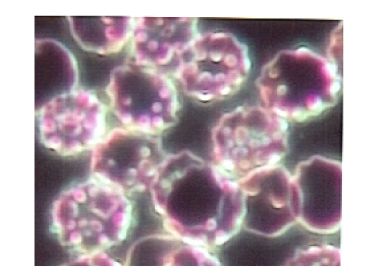
LONDON (Reuter) - British researchers said they
have found intriguing evidence that a common
bacteria can cause heart attacks.
By Maggie Fox.
They said men who had suffered one heart attack
and who had antibodies to Chlamydia
pneumoniae were four times more likely to
suffer second heart attacks. Treating them for
the infection lowered the risk.
A
malfunctioning immune system can cause allergies
or arthritis
and can fail to stop the growth of cancer cells
| Chlamydia pneumoniae
bacteria enter the body through the mouth
and nose, infecting the lungs and causing
respiratory diseases such as bronchitis and
pneumonia. Chlamydia pneumoniae is a very
common germ—nearly everyone at some
point in his life becomes infected by it.
Usually, the initial infection is so mild
that the victim never even knows that he's
picked up the germ. |
|
To cure the infection, the
body uses immune cells in the lungs, which
surround the germs, swallow them whole, and
kill them. But the Heart Attack Germ is difficult
to kill and may actually live and multiply
inside immune cells. That's why most Chlamydia
pneumoniae infections last a long time—the
body is never able to completely eliminate
the germ.
Boost
your immune system
|
|
Immune cells exit the lungs,
carrying the living Chlamydia germs through
the bloodstream and into the arteries of
the heart and brain. Once inside an artery,
the germs multiply, damaging the artery wall
and creating long-term infection and inflammation.
This constant, low level of infection and
inflammation produces no obvious symptoms.
The victim is sick, but he doesn't know it
... yet.
|
|
Since cholesterol plaque is
naturally drawn to the site of inflammation,
long-term infection and inflammation continually
draws cholesterol plaque to the artery over
an extended period of time. As the years
pass by, layer after layer of plaque is deposited
in the artery. These layers build into mounds
of cholesterol that clog the artery, creating
the symptoms of cardiovascular disease and
the sudden occlusions that trigger most strokes
and heart attacks.
|
|
The findings, published in the American Heart
Association journal Circulation, add to a growing
body of evidence that heart attacks may sometimes
be due to infection rather than genetics or lifestyle.
"We know that antibodies seem to be linked
to heart disease," Dr. Sandeep Gupta at
St. George's Hospital Medical School in London,
who led the study, said in a telephone interview.
In addition, the chlamydia
bacteria, which cause a chest infection
and which are a close relative of a common
sexually transmitted disease, have turned up
in the fatty plaques that line clogged arteries.
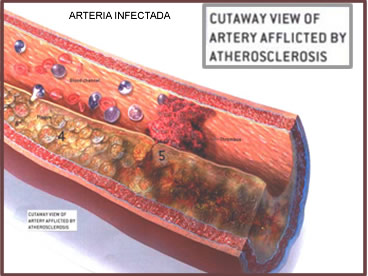
Gupta's British Heart Foundation team joined
the race of researchers trying to establish a
more than circumstantial link between the bug
and heart attacks.
 |
chlamydia
pneumonia which must be addressed.
Try general antiseptic and parasites
general if no response.) - 250, 1.2,
650, 625, 600, 787, 727, 262, 776 Hz.
|
His team took 213 survivors of heart attacks
and divided them into three groups according
to how many chlamydia antibodies they had in
their blood.
They watched for heart attacks for 18 months. "The
group of heart patients with negative antibodies,
they had an approximately seven percent event
rate over 18 months,'' Gupta said.
Those with intermediate levels of antibodies
had double that risk, while those with high antibody
levels -- meaning bigger chlamydia infection
-- had a 28 percent ``event rate'' of heart attacks.
That was four times the risk of the group that
had no antibodies.

"But the guys that had high antibodies
and also got antibiotics, their risk went down
to eight percent," Gupta added.
They were given a single three-day course of
azithromycin, although Gupta said he believed
several antibiotics such as tetracycline would
also have worked.
"This is a small study," Gupta noted.
He said his team would now start a two-year study
with 2,500 volunteers. "I don't think we
are in a position yet to tell people you should
be having antibiotics. No way,'' he added.
Gupta said he thought chlamydia was causing
inflammation, which in turn caused blood clots.

The chlamydia was somehow crossing into the
arteries, he added. Immune system cells could
be the key. "It's a lung infection but it's
found in the coronary,'' he said. "It may
be transported in the monocyte, the warrior,
the white cell."
Activated monocytes produce a chemical on their
surface known as tissue factor. Meant to be part
of the healing process, it can help trigger blood
clotting.
Chlamydia was a logical culprit because it was
so insidious, Gupta added. It could lurk in the
body a long time, causing few symptoms but a
lot of damage.
"If you look at other chlamydia species,
it's the commonest cause of infertility in the
USA," he said. "It causes inflammation
of the Fallopian tubes and then it causes scarring."
With another chlamydial infection, trachoma,
blindness is caused in a similar way by scarring
eye tissue.
If antibiotics could help even a small percentage
of people with heart disease, many lives would
be saved by something as easy as taking a few
tablets, Gupta said.
REUTER@
Symptoms and diagnosis
Symptoms of infection with
C. pneumoniae are indistinguishable from
other causes of pneumonia. These include
cough, fever, and difficulties breathing.
A sligtly red hard palate, and a whitening
of the back of the tongue are very common.
Patients infected with C. pneumoniae often
have nasal congestion, chest pressures and
depression. C. pneumoniae more often causes
pharyngitis, laryngitis, and sinusitis than
other causes of pneumonia; however, because
many other causes of pneumonia results in
these symptoms, differentiation is not possible.
Likewise, a physical examination by a health
provider does not typically provide information
which allows for a definite diagnosis.
|
| If you
suspect you may have CPN or CPN complications,
ask your doctor to test for PCR testing
especially that which is referred to
as nested-PCR testing, is considered
to have the highest sensitivity and
to be most objective source of serology
testing for Cpn. |

The Germ Theory of Disease
is now being given more credence.
In The Hidden Epidemic, health writer and disease
investigator Bill Sardi reveals a “stealth
bacterium” that may cause the sudden rise
in childhood autism, asthma and diabetes, and
many other diseases and disorders.
This same bacterium may be the primary cause
of schizophrenia, allergy, digestive tract problems,
Parkinson’s disease and even cancer.
Even more alarming, it appears more than 95%
of the population may be infected by this bacterium,
or will experience future or recurrent infection.
Complicating the problem is the fact that this
germ cannot easily be detected in the human body,
even by the best microbiologists.
Since antibiotics are now growing weaker, and
a totally-drug resistant form of stealth bacterium
is now taking hold in the population, humanity
will be forced to search for alternatives to
antibiotics. Nature provides such natural alternatives,
and they are revealed in The Hidden Epidemic.
|
|
|
|
|
|
"Everything in life is vibration"Albert
Einstein
|
Other illnesses
In addition to pneumonia, C.
pneumoniae less commonly causes several other
illnesses. Among these are meningoencephalitis
(infection and inflammation of the brain
and spinal cord), arthritis, myocarditis
(inflammation of the heart), and Guillain-Barré syndrome
(inflammation of the nerves). It has also
been associated with dozens of other conditions,
such as Alzheimer's disease, fibromyalgia,
Chronic Fatigue Syndrome, prostatitis, and
many others.
|
High levels of iron along with Chlamydia pneumoniae
infection are now suspected. [Biological Research
Nursing 6: 3-10, 2004] (Not to be confused with
Chlamydia trachomatis, which causes ocular and
genital infections)
Researchers note that people who have higher
antibody levels against germs such as enterovirus,
herpes simplex and Chlamydia pneumonia, are more
likely to have coronary heart disease. [Atherosclerosis,
June 14, 2006] Furthermore, recently researchers
have linked atrial fibrillation (fluttering of
the top chambers of the heart) with Chlamydia
pneumonia respiratory infection. Patients with
atrial fibrillation and/or Chlamydia pneumoniae
infection often have the same accompanying problems
of high blood pressure, heart attack and reduced
lung function. [Medical Hypotheses 67: 462, 2006]
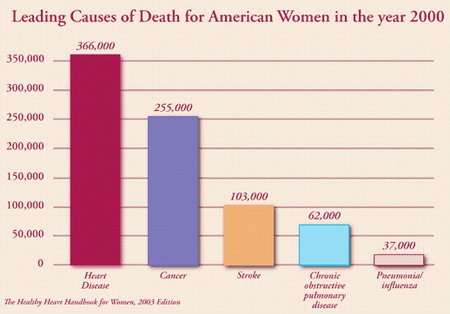
An interesting study of coronary arteries examined
during autopsy found DNA evidence for Chlamydia
pneumoniae in 31.7% of diseased coronary arteries
and 0% (zero) percent in healthy coronary arteries.
[International Journal Immunopathology Pharmacology
17: 301, 2004]
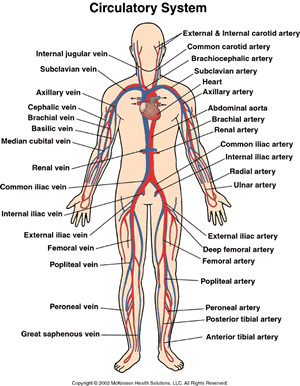
C. pneumoniae infects endothelial cells that
line the inside of arteries and induces inflammatory
reactions (elevated C-reactive protein) that
are commonly observed in atherosclerosis. [International
Immunopharmacology 6:848-53, 2006]
While antibiotics have been recommended for
routine use with the onset of heart disease [Herz
23, 185, 1998] doctors still cling to the cholesterol
concept in controlling heart disease.
However, antibiotic therapy has produced inconsistent
results in quelling germ-related heart disease.
Furthermore, recent studies do not indicate the
presence of antibodies against C. pneumoniae
can predict heart attacks. [Journal Infection
53: 93-97, 2006]

While prescription antibiotics may generate
resistant forms of bacteria like Chlamydia pneumoniae
[Antimicrobial Agents Chemotherapy 49:903-7,
2005], there are molecules found in nature that
are quite active against this germ that do not
induce germ resistance. For example, resveratrol,
commonly found in concentrated form in red wine,
is active against Chlamydia pneumoniae, which
may be one reason why wine drinkers exhibit reduced
risk for heart disease. [Atherosclerosis 171:
379-80, 2003]

Recently researchers at the Drug Discovery and
Development Technology Center in Helsinki, Finland,
note that while antibiotics are effective against
this infection, eradication of Chlamydia pneumoniae
is “extremely difficult.” High doses
of antibiotics for extended periods of time are
needed to achieve a cure.
Therefore, these researchers screened natural
molecules and found many that are 100% active
in inhibiting Chlamydia pneumoniae. While many
of these natural molecules are not commercially
available to consumers, one is -- Myricetin,
naturally found in berries, which is available
as a botanical extract from Myricetin
There are signs and symptoms other than heart
disease that may provide clues to Chlamydia pneumoniae
infection. Chlamydia pneumonia infection is also
associated with asthma, chronic obstructive pulmonary
disease and lung cancer. It commonly
causes symptoms of sore throat and sinusitis.
Chlamydia pneumoniae may not be the only stealth
bacteria involved in heart disease. Dr. Lawrence
Broxmeyer MD, writing in Medical Hypotheses,
suggests Mycobacteria tuberculosis is another
candidate germ that has connections to heart
disease.
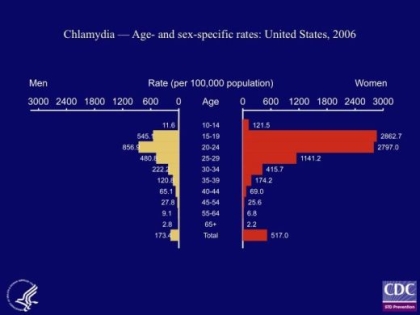
Dr. Broxmeyer notes that TB is a micro-organism
that is dependent upon cholesterol for its destructive
action and maps showing areas of high rates for
cardiovascular disease are strikingly similar
to regions with high TB rates. [Medical Hypotheses
62: 773-79, 2004]
It is known that allicin, the active ingredient
produced when a clove of garlic is crushed, is
active against tuberculosis. [FEBS Letters 580:2517-22,
2006] However, garlic pills may produce little
or no allicin due to destruction by stomach acid
of an enzyme, allinase, needed to produce allicin.
Most garlic pills are labeled for allicin content
after testing in water rather than simulated
stomach acid. [J Agriculture Food Chemistry 49:2592-9,
2001] Therefore, labeling on most garlic pills
cannot be relied upon.
Bill Sardi, Knowledge of Health, Inc
HOW
CAN I PROTECT MYSELF FROM
THE HEART ATTACK GERM?
 |
Chlamydia
Pneumonia which must be addressed.
Try general antiseptic and parasites
general if no response.) - 250, 1.2,
650, 625, 600, 787, 727, 262, 776 Hz.
|
|
|
|
|
|
|
"Everything in life is vibration"Albert
Einstein |
Some
new frequency sets Based on Viruses
for our clients with Rife Machines
SKIN CANCER Scientists
from the ICRF have found that up to 50 per cent
of immunosuppressed kidney transplant patients
develop skin tumours and all of them are indeed
with a new human papilloma virus (H They believe
the virus may predispose cells to being damaged
by UV sun rays.
Condylomata (usually venereal warts, caused by
papilloma virus. Occur near intersection of mucous
membranes and skin. See also Papilloma.) - 466

Conjunctivitis (also
use Chlamydia trachomatis) - 489, 1550, 880,
802, 787,
727, 20, 80, 432, 722, 822, 1246, 1830
CERVICAL CANCER Women
with cervical cancer have been found to lack
antibodies to a protein (E2) produced by HPV
type 16 which is found in 95 per cent of cervical
tumours. Their immune system thus does not recognize
HPV-infected cells as foreign. Smoking, which
increases the risk of cervical cancer is also
thought to reduce immune system ability to eliminate
HPV. US researchers have launched human trials
of an HPV vaccine. LEUKAEMIA The Institute of
Public Health in Cambridge reported last month
that Iymphocytic leukemia - the commonest type
of cancer in children - could be caused by a
seasonal virus. After studying 4,000 cases, they
found people were 40 per cent more likely to
be diagnosed with the condition between May and
October.
Papilloma, and Cancer, carcinoma freqs) - 465,
2127, 2008, 727, 690, 666
RHEUMATOID ARTHRITIS Chlamydia
pneumonae has been isolated in the inflamed joints
of people with rheumatoid arthritis. Antibiotic
trials have improved pain and mobility.
Arthritis,
rheumatoid (muscles and tendons. Cause
could be bacteria like
chlamydia pneumonia which must be addressed too.
Try general antiseptic and parasites general
if no response.) - 250, 1.2, 650, 625, 600, 787,
727, 262, 776
Arteriosclerosis (hardening
of the arteries; regeneration takes time. Also
try chlamydia pneumonia and CMV freqs) - 10000,
2720, 2170, 1800, 1600, 1500, 880, 787, 776,
727, 20
CROHN'S DISEASE Researchers
at the Royal Free Hospital, London believe chronic
infection with measles virus causes Crohn's Disease.
They have found live virus in ulcerated parts
of the colon and suggest it is periodically triggered
into adion, causing an immune response that causes
long-term damage to blood vessels in the bowel
lining.
German
measles secondary - 727,
787, 880
German
measles (rubella) - 510, 517,
796, 967, 368, 734, 772
Measles -
727, 787, 880, 342, 442, 443, 467, 520, 521,
552, 1489, 745, 757, 763, 712
MENTAL ILLNESS Research
suggests that chemical agents produced when the
immune system attacks a virus can affect the
brain. These chemicals have been implicated in
various psychiatric disorders. People with glandular
fever, which is linked to pathogens such as Epstein
Barr virus, have four times the risk of developing
clinical depression. Also
for Depression
Epstein
Barr Virus: 428, 660, 727,778,
787. 20 min.
660, 728, 787 Epstein Barr virus also has been
used for Mononucleosis
PARKINSON'S DISEASE Researchers
in Leeds suggest Parkinson's could be due to
a virus which enters the central nervous system
through the nose (up to 90 per cent of Parkinson's
patients lose their sense of smell). Studies
in mice show viruses introduced through the nose
spread rapidly in the brain.
Parkinson's
disease (a slowly progressive,
degenerative, neurologic
disorder, also use Chlamydia pneumoniae and see
Nocardia asteroides freqs) - 693, 813, 1.1, 5000,
1131 for 3 min, 33 for 30 min
Cancer,
Hodgkin's disease (a form
of malignancy characterized by enlargement
of the lymph nodes, spleen, and lymph tissue
and often includes weight loss, fever, night
sweats, and anemia. Also called lymphogranuloma.
Also see Chlamydia pneumoniae.) - 552, 1522
|

